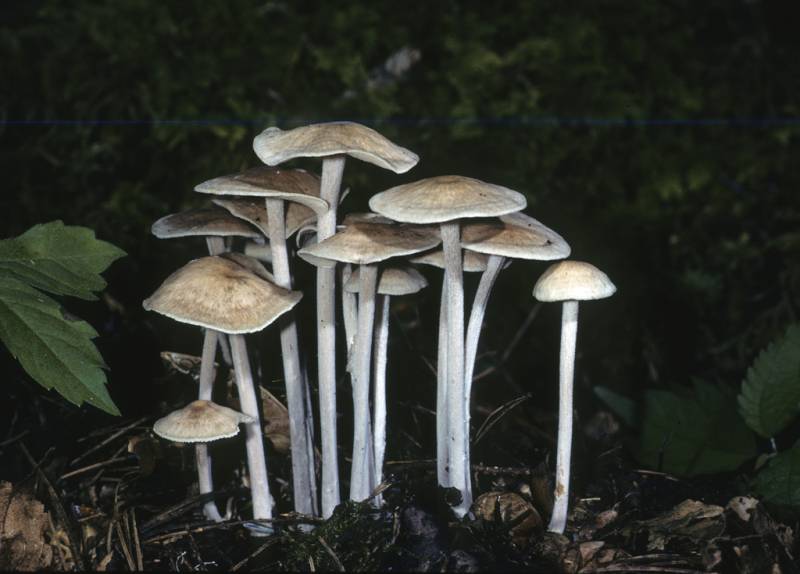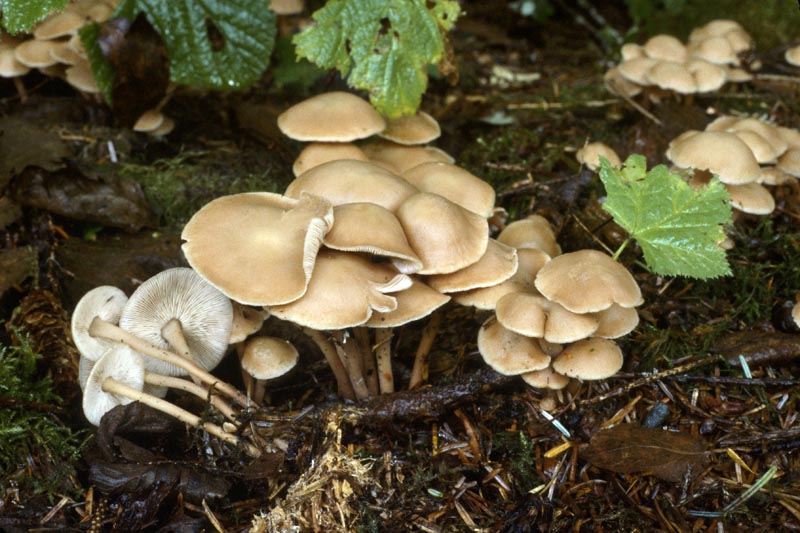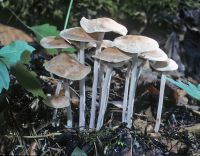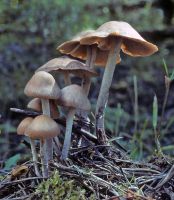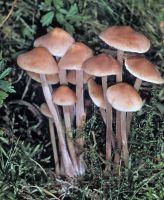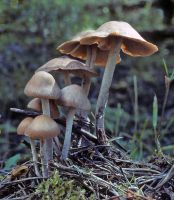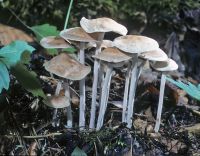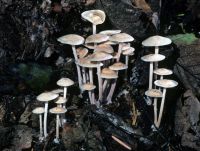Distribution: Mixed woods with heavy litter accumulations
Conservation Status: Not of concern
. It most often is in clusters or occurs as a few to many closely associated fruitbodies. The mushrooms are thin-fleshed and marcescent, so that the clusters can remain in the forest for a long time. Usually they begin to appear in late spring or early summer and continue through fall. The gills are crowded, very narrow and pale to whitish. The caps are reddish brown when fresh but soon fade to pinkish buff or whitish, and the stipes are long, narrow, enlarged at the base, tough, similar in color to the cap, but becoming darker in age, and often covered with fine small hairs. The taste and odor are usually mild, but occasionally reported as onion-like.
PNW Herbaria: Specimen records of Gymnopus confluens in the Consortium of Pacific Northwest Herbaria database
CalPhotos: Gymnopus confluens photos

